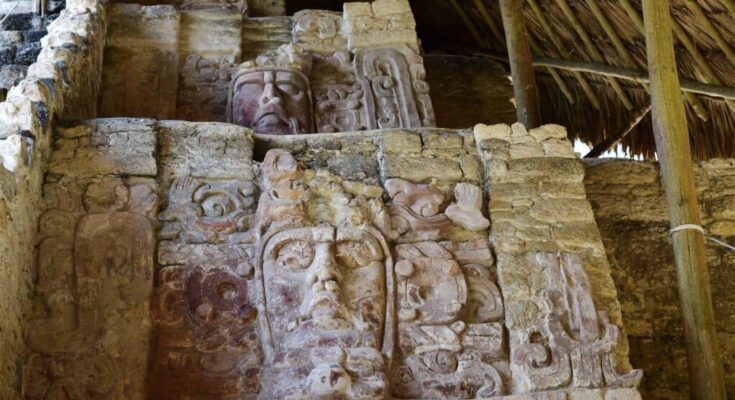
Archaeologists in Mexico are making remarkable discoveries in the dense forests of the Yucatán Peninsula. In Dzibanché, Quintana Roo, two large platforms with plaster carvings have revealed new details about the Kaanu’l dynasty.
The dynasty was an influential ruling group that controlled parts of modern-day Mexico, Belize and Guatemala.
The National Institute of Anthropology and History (INAH) announced that these carvings give a deeper understanding of how the Kaanu’l dynasty viewed the world and ruled its people.
Active from around 250 to 650 AD, this dynasty was prominent in Mayan history, holding power across a large region and leaving an enduring mark on the area’s culture.
Ancient Mayan Reliefs Discovered in Mexico
New discoveries in the Mayan region were unearthed by the National Institute of Archeology and History.
The findings, from the Kaanu'l dynasty, were discovered in the Archaeological Zone of Dzibanché. pic.twitter.com/g6Zdpqi6BY
— Samuel
(@resisres) October 23, 2024
Sandra Balanzario Granados, head of the archaeological program in Dzibanché, described the finding as important, noting that while decorated carvings had been seen on larger buildings, finding such detailed work on a ball court was unexpected.
Moreover, this area was once a ceremonial space, and the carvings display three main scenes that provide insights into Maya beliefs.
Carved mayan reliefs tell a story of power and belief
The newly found reliefs show three symbolic scenes. In the first, two guardians stand beside a pedestal, which once held a statue of a Kaanu’l dynasty ruler. Symbols carved on the pedestal reference the leader, highlighting his authority and connection to the city.
The second scene illustrates ancestors represented in the night sky, surrounded by stars and snakes. This imagery, according to expert Alexander Tokovinine, combines Maya and Teotihuacán symbols.
Interestingly, the pedestal lacks a central statue, suggesting that the figure may have been removed by the city’s inhabitants in ancient times.
The third scene portrays mythological animals associated with constellations, with snakes intertwined throughout, symbolizing the rulers’ connections to their lineage. INAH explains that such imagery reflects the belief that Maya rulers were seen as representatives of the gods on Earth.
The split of the Kaanu’l dynasty
Over time, the Kaanu’l dynasty broke into two groups. One group remained in Dzibanché, while the other established itself in Calakmul, in what is now the state of Campeche. This division marked a significant shift in the region’s political landscape.
As construction continues on the Maya Train, INAH has unearthed numerous artifacts, highlighting the area’s deep historical importance.
Recent discoveries include a pre-Columbian cave in Tulum, a rainwater-catching device, and an ancient temple dedicated to Kukulkán, the feathered serpent god. These finds paint a vivid picture of the region’s cultural wealth in ancient times.




